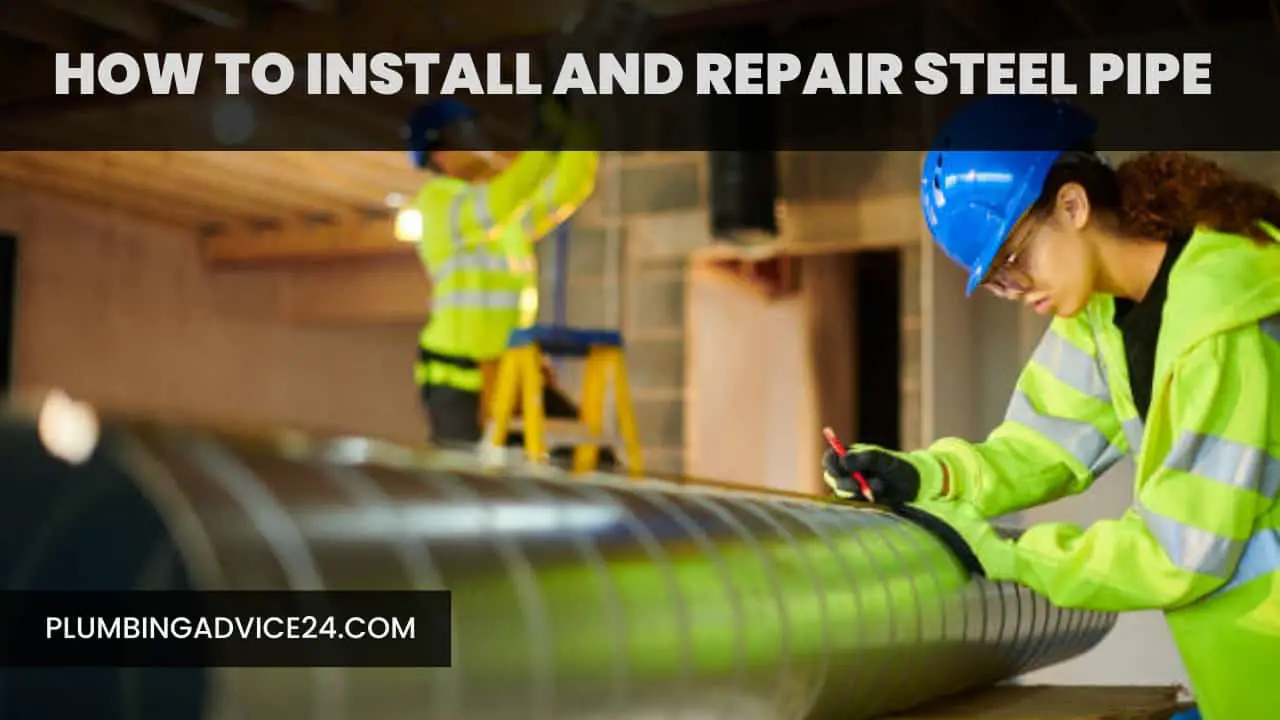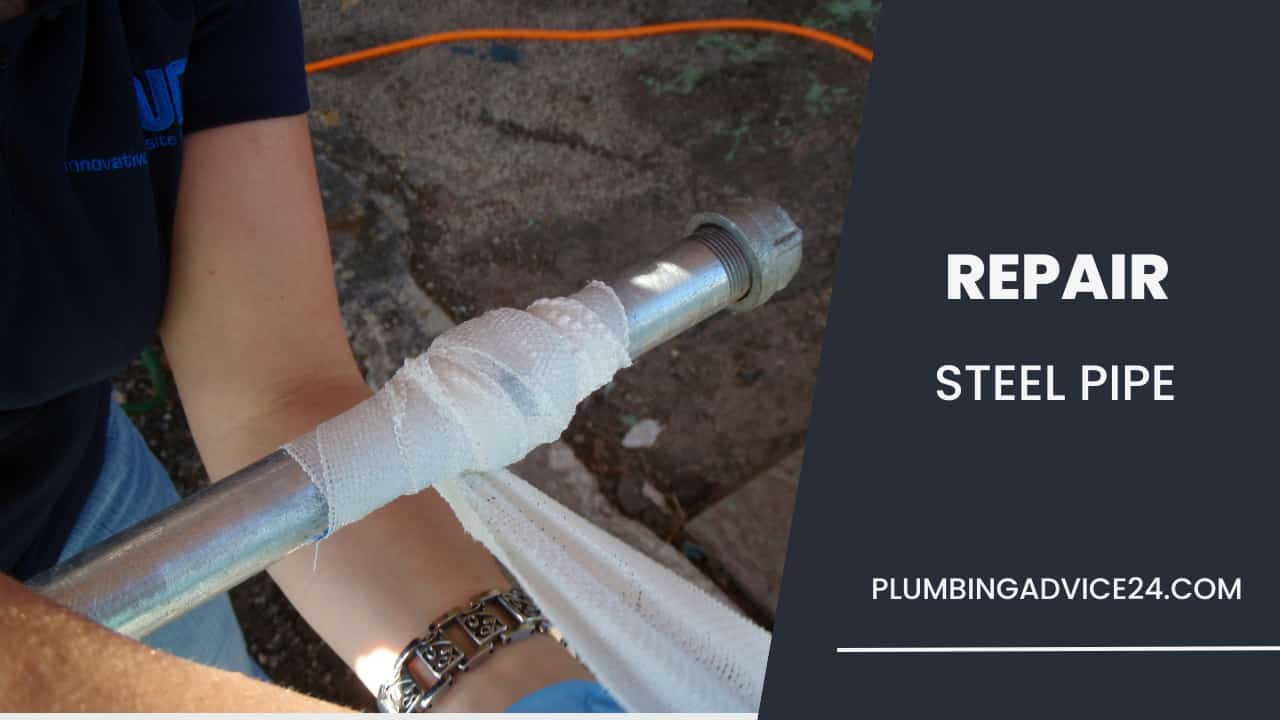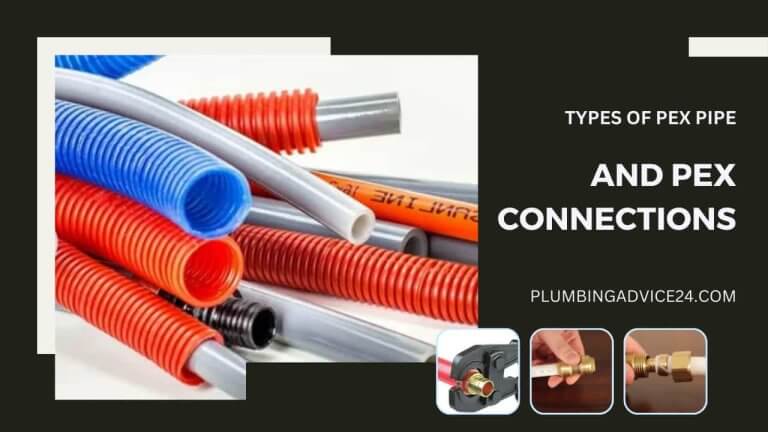How to Install and Repair Steel Pipe
Steel pipe was once the standard for plumbing in homes and commercial buildings but is no longer used for drinking water supply lines. Most plumbing codes now require copper or polyvinyl chloride (PVC) pipe for potable water. But it is possible to repair steel pipe. There are also some simple ways to repair steel pipes. Moreover, steel pipe is still used in many different applications. So you should read the entire article.
If you choose to work with steel threaded pipe, one difficulty is terminating the run in the correct location. A “run” is the path of the pipe you are working on. Because threaded pipe ends are fitted, you can’t just cut a piece to fit like you can with copper or plastic materials like PEX. You will need to purchase long pieces of steel pipe or short lengths of pipe threaded at each end.
How to Install Steel Pipe?
To install steel pipe, you can buy threaded steel pipe from a hardware store and threaded pieces of steel pipe of the size you need and connect them together to form a plumbing system. But sometimes, you will need to cut and thread the pipe if you can’t find pre-threaded pieces in the required length. For which you need to be prepared already. You should take care that the cutting steel pipe is square and even.
Follow the steps below to install the steel pipe:
- First, secure the pipe firmly in a pipe vice or solid bench vise. Then use a rotary pipe cutter to cut to length. Place the cutter on the pipe and tighten the knurled handle until the cutting wheel touches the pipe.
- Apply some cutting oil or even light automotive oil and tighten the tool slightly on the pipe. Make a few turns around the pipe. Turn the knurled handle to tighten and make a few more turns, again lubricating with oil. Continue tightening, twisting, and lubricating until the pipe is cut. A power hacksaw can also be used to cut steel pipe, making straight, square cuts suitable for threading.
- Smooth the inside of the steel pipe cut with a reamer.
- Thread the pipe using a threading tool of diameter to match the pipe.
- Connect the coupling or pipe fitting to the pipe thread with Teflon tape or pipe thread compound.
- Hand tightens the pipe and coupling or fitting. Then, using a pipe wrench, tighten one and a half more turns on one pipe and one fitting.
- Connect the second steel pipe to this coupling or fitting by means of a Teflon tape and thread combination.
- Steel piping is heavy and must be well supported, especially at each joint or coupling. Use pipe strapping around the pipe.
- Turn on the water flow and check for leaks.
- If a pipe is used for gas, use a soft brush and a little water with dish detergent to coat all joints with the solution. Any bubbles produced indicate a leak. Turn off the gas, retighten the joint, and test again.
Related Post : What Is Steel Pipe | Steel Pipe Life Expectancy | Steel Pipe Applications | Steel Pipe Size | Steel Pipe Cost
How to Repair Steel Pipe?
Over time, steel pipes in your home can become damaged and leak. The damage can vary from a hole bored in the pipe by corrosion to a crack in the pipe. You can repair steel pipe damage without cutting and welding a patch plate to the steel pipe and without replacing it. If you follow the directions of the pipe repair kit, the repair will last a long time, and it can be used on almost all types of piping.
Follow the steps below to repair steel pipe:
- To repair a steel pipe that has a leak or crack, first turn off the water flowing through it and turn on all the faucets in the house to drain the water from the line.
- Clean leaking or cracked steel pipes with a dry rag and dry.
- Remove the epoxy putty from the fiberglass repair kit and mix the two putties in one color according to the pipe repair kit instructions.
- Apply the mixed epoxy putty to the leaking area of the pipe. Work the epoxy over the surface of the pipe, making sure you remove all the air from the epoxy.
- Remove the roll of resin-impregnated fiberglass from the fiberglass repair kit and dip it in water two or three times.
- Wrap a wet fiberglass roll around the damaged area of the pipe.
- Wrap the entire roll of fiberglass tightly around the pipe. And make sure there is no air left in the fiberglass tape. If air is detected, massage over the fiberglass tape.
- Allow the fiberglass repair to cure for the time recommended on the pipe repair installation instructions before you turn on the water. If you turn on the water before the repair is fixed, the water will break the bond between the fiberglass tape and the surface of the pipe.
- Turn on the water, wait 30 minutes, and then inspect the repair for leaks. If you notice a leak, you may need to apply an additional roll of fiberglass tape to seal the damaged pipe.
Related Post : Types of Steel Pipes | Stainless Steel Pipe Vs Carbon Steel Pipe
How to Replace a Steel Water Pipe?
Some older homes use steel pipes as water supply lines. The minerals in the water react with the steel material and corrode the pipe, resulting in deposits that clog the pipe and reduce water flow. It can also cause unpleasant odors in the water. Replacing a section of corroded steel pipe can dramatically improve water flow to your home and cause the loss of something else.
Follow the steps below to replace a steel water pipe:
- Turn off your home’s water supply and open all faucets to drain the lines.
- Cut through a section of steel pipe with a reciprocating saw or hacksaw.
- Hold the fitting at the end of the cut section with a wrench and hold the section of pipe with another wrench. Turn it counterclockwise to remove the pipe section. Similarly, remove the rest of the pipe from the fitting at the other end. Heat for 5 to 10 seconds to easily remove stubborn fittings.
- Remove the fitting using both wrenches and scrub the pipe threads with a wire brush. Apply pipe joint compound to the threads on the pipe and screw on the new fittings, leaving the fittings about one-eighth of a turn loose to make it easier to assemble all the parts.
- Insert two threaded pipes or nipples into the union fitting. Compare the length of the assembled union fitting and nipple with the length of the removed section of pipe to make them the same length.
- Apply a bead of pipe fitting compound to the threads of one of the nipples and insert the nipple into one of the pipe fittings. Tighten the nipple with a wrench.
- Unscrew the union fitting to separate it. Place a piece of union fitting on the end of the nipple. Tighten the union fitting with a wrench.
- Apply a bead of pipe fitting compound to the threads of the second nipple and insert the nipple into the second pipe fitting. Tighten the nipple with a wrench and place another piece of union fitting on the end of the other nipple.
- Turn the pipe fitting one-eighth turn to connect the two pieces of union fitting on the nipple end. Tighten the connection with a wrench.
Related Post : Types of Metal Pipes | Seamless Vs Welded Pipes
How Many Times Should You Wrap Teflon Tape?
For a new joint, you should apply only two or three coats of Teflon tape. On older fittings where the threads may be damaged, you may want to consider adding a few more wraps but keep the number of warps to a minimum.
Can You Use Sharkbite on Steel Pipe?
Sharkbite fittings are designed to provide an extremely fast, safe, and reliable method of joining copper, PEX, polybutylene, and carbon steel pipework. You can use shark bite fittings for carbon steel pipe.
How Can I Join Steel Pipe Without Welding?
After welding, brazing is the most effective method of joining two pieces of steel. Like welding, brazing also involves heat, torch, flux, and filler metal. The difference is the intensity of heat and less sophistication involved in the process.
What Are the Methods of Joining Steel Pipes?
Steel pipes are usually joined by welding, using pipe threads, or using mechanical connections. Process piping is usually joined by welding using the TIG or MIG process. The most common process is the steel pipe joint butt weld.
How Do You Repair Steel Pipe?
Epoxy and tape are two common no-weld pipe repair options. You can repair a small hole yourself rather than a significant tear. Specialized epoxy and tape products are designed to repair steel pipe or repair other metal pipes.
Will Black Steel Pipe Rust?
Most buildings and homes use stainless steel or black steel pipes. You’ll see them as railings, railings, or ducts to carry electricity, gas, and ventilation. These steel pipes are susceptible to corrosion due to moisture.
How Can I Keep My Steel Pipe from Rusting?
The best way to protect against metal-to-metal corrosion is to insulate the metal. For steel piping, consider installing insulators, such as wear pads or pipe shoes. Insulators add a buffer between the steel metals, so the steel pipe is durable for longer.
Can You Connect Pex to Galvanized Pipe?
Install threaded transition fittings to go from galvanized pipe fittings to PEX tubing. Depending on the type of PEX fitting used, a dielectric union may be required. Connect the PEX tubing to the fitting using a compatible method. Check the connection for accuracy.
Is Galvanized Pipe Stronger Than Black Pipe?
Black steel pipe and galvanized pipe are made of steel but galvanized pipe has a zinc coating, while black pipe does not have a zinc coating. This makes galvanized pipes more expensive, more durable, and stronger.
Can You Patch Galvanized Pipe?
Cover the leak in the galvanized pipe completely with a neoprene patch, wrap a clamp around both ends of the patch to secure it, and turn on the water to make sure it works.
If You Liked This Post? So Share It with Your Friends
Suggested Articles:









